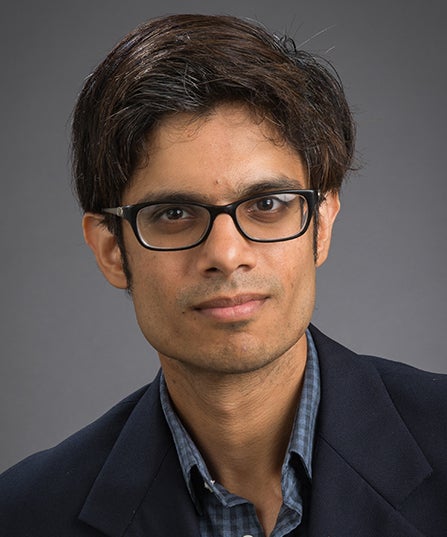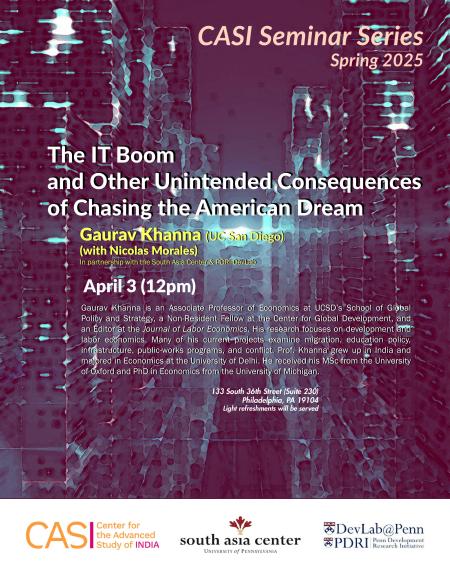The IT Boom and Other Unintended Consequences of Chasing the American Dream
Ronald O. Perelman Center for Political Science & Economics
133 South 36th Street, Suite 230
Philadelphia PA 19104-6215
About the Lecture:
Prof. Gaurav Khanna studies how US immigration policy and the Internet boom led to a tech boom in India. Students and workers in India acquired computer science skills to join the rapidly growing US IT industry. As the number of US visas was capped, many remained in India, enabling the growth of an Indian IT sector that eventually surpassed the US in IT exports. He leverages variation in immigration quotas and US demand for migrants to show that India experienced a “brain gain” when the probability of migrating to the US was higher. Using detailed data on higher education, alumni networks, and work histories of high-skill workers, he shows that changes in the US H-1B cap induced changes in fields of study, and occupation choice in India. The H-1B program induced Indians to switch to computer science occupations and helped drive the shift in IT production from the US to India.
About the Speaker: Gaurav Khanna is an Associate Professor of Economics at UCSD’s School of Global Policy and Strategy, a Non-Resident Fellow at the Center for Global Development, and an Editor at the Journal of Labor Economics. His research focuses on development and labor economics. Many of his current projects examine migration, education policy, infrastructure, public-works programs, and conflict. Prof. Khanna grew up in India and majored in Economics at the University of Delhi. He received his MSc from the University of Oxford and PhD in Economics from the University of Michigan.
Gaurav Khanna is an Associate Professor of Economics at UCSD’s School of Global Policy and Strategy, a Non-Resident Fellow at the Center for Global Development, and an Editor at the Journal of Labor Economics. His research focuses on development and labor economics. Many of his current projects examine migration, education policy, infrastructure, public-works programs, and conflict. Prof. Khanna grew up in India and majored in Economics at the University of Delhi. He received his MSc from the University of Oxford and PhD in Economics from the University of Michigan.

